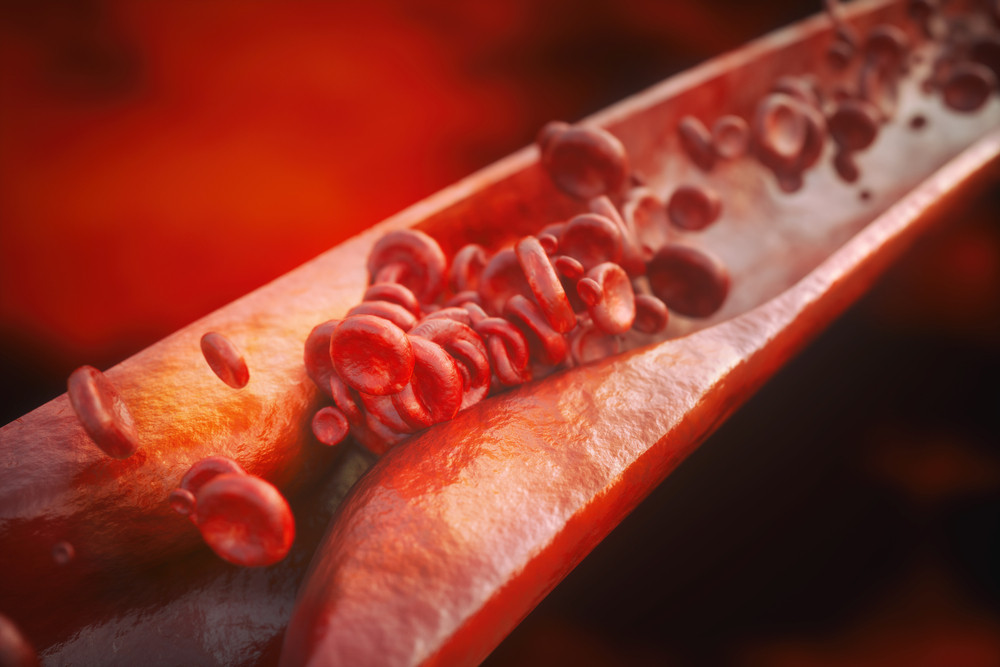Coronary Heart Disease

According to the data from the Centre for Health Protection, coronary heart disease (also known as coronary artery disease) is a significant contributor to mortality among heart diseases in Hong Kong. The Population Health Survey conducted from 2020 to 2022 indicated that 1.6% of individuals aged 15 or above reported being diagnosed with coronary heart disease by a doctor. The prevalence was higher in males (2.1%) than females (1.2%). Furthermore, the prevalence of coronary heart disease increased with age, ranging from 0.1% among those aged 15-24 to 7.7% among individuals aged 85 or above.
What is Coronary Heart Disease?
Coronary heart disease (CHD) is a condition that occurs when the coronary arteries, which supply oxygen-rich blood to the heart muscle, become narrowed or blocked. It is primarily caused by atherosclerosis, a buildup of cholesterol, fatty deposits, and other substances in the inner walls of the arteries. As the arteries narrow, blood flow to the heart is reduced, resulting in a reduced oxygen supply to the heart muscle. As a result, individuals with CHD may experience symptoms such as chest pain or discomfort, known as angina. If a blood clot forms and completely blocks the blood flow to a part of the heart, it can cause a heart attack or myocardial infarction, which can lead to permanent damage or even death of the heart muscle.

What are the symptoms of coronary heart disease?
The symptoms of coronary heart disease (CHD) can vary from person to person. Some individuals may experience noticeable symptoms, while others may have no symptoms at all. Common symptoms of CHD include:
Chest Pain (Angina)
Angina is the most typical symptom of CHD and is characterized by chest pain or discomfort. It may feel like pressure, tightness, squeezing, or a burning sensation in the chest. Angina can also be felt in the shoulders, arms, neck, jaw, or back. It typically occurs during physical exertion or emotional stress and subsides with rest or medication.
Shortness of breath
Reduced blood flow to the heart can lead to inadequate oxygen supply to the body, resulting in shortness of breath. This symptom may occur during physical activity or even at rest.
Fatigue
CHD can cause reduced cardiac function, leading to fatigue or a general feeling of tiredness even with minimal physical exertion.
Palpitations
Some individuals with CHD may experience irregular heartbeats, rapid heart rate, or a sensation of fluttering in the chest.
Dizziness or lightheadedness
In some cases, reduced blood flow to the brain due to CHD can cause episodes of dizziness or lightheadedness. These symptoms may be more pronounced during physical activity or when standing up suddenly. In severe cases, it may result in fainting or syncope.
10 Risk Factors of Coronary Heart Disease
Several risk factors can contribute to the development of coronary heart disease (CHD). Some risk factors can be modified or controlled, while others are non-modifiable. Understanding and managing these risk factors is crucial for reducing the risk of CHD. Here are the common risk factors associated with CHD:
High blood pressure (hypertension)
Uncontrolled high blood pressure can damage the arteries over time, leading to atherosclerosis and increasing the risk of CHD.
High cholesterol levels
Elevated levels of low-density lipoprotein (LDL) cholesterol, often referred to as "bad" cholesterol, and low levels of high-density lipoprotein (HDL) cholesterol, known as "good" cholesterol, can contribute to the buildup of plaque in the arteries, increasing the risk of CHD.
Smoking
Cigarette smoking damages the blood vessels and reduces oxygen supply to the heart. It also increases the formation of blood clots, narrows the arteries, and contributes to the development of atherosclerosis.
Diabetes
Individuals with diabetes are at a higher risk of developing CHD. Uncontrolled blood sugar levels can damage blood vessels and increase the risk of atherosclerosis.
Obesity
Excess body weight, particularly if it is concentrated around the abdomen (central obesity), increases the risk of CHD. Obesity is often associated with other risk factors such as high blood pressure, high cholesterol levels, and diabetes.
Sedentary lifestyle
Lack of regular physical activity and a sedentary lifestyle increase the risk of CHD. Regular exercise helps maintain a healthy weight, improves cholesterol levels, lowers blood pressure, and promotes overall cardiovascular health.
Unhealthy diet
A diet high in saturated and trans fats, cholesterol, sodium (salt), and refined carbohydrates (sugars and white flour) can contribute to the development of CHD. A healthy diet should include fruits, vegetables, whole grains, lean proteins, and limited amounts of saturated fats, sodium, and added sugars.
Family history
Having a close family member, such as a parent or sibling, with a history of CHD increases the risk of developing the condition.
Age and gender
The risk of CHD increases with age, and men generally have a higher risk of developing CHD at an earlier age. Women's risk of CHD increases after menopause.
Stress
Chronic stress, especially when accompanied by unhealthy coping mechanisms such as overeating, smoking, or excessive alcohol consumption, can contribute to the development of CHD.
It's important to note that having one or more risk factors doesn't necessarily mean a person will develop CHD. However, managing and controlling these risk factors through lifestyle changes, medication, and regular medical care can significantly reduce the risk of CHD and its complications.
Diagnose of Coronary Heart Disease
Diagnosing coronary heart disease involves several methods:
- Medical history and physical examination
- Electrocardiogram (ECG or EKG)
- Exercise Stress tests
- Echocardiogram
- Coronary angiography
- Cardiac CT scan
- Cardiac MRI
- Blood tests
What are the treatments of Coronary Heart Disease??
The treatment of CHD can vary depending on the severity of the condition and individual patient factors. Here are some common treatment approaches::
Medications
Various medications may be prescribed to manage CHD, including:
- Antiplatelet drugs, such as aspirin or clopidogrel, help prevent blood clot formation.
- Cholesterol-lowering drugs, such as statins and niacin, are commonly prescribed to reduce cholesterol levels.
- Beta-blockers help lower heart rate and blood pressure, reducing the workload on the heart.
- Antihypertensive drugs, such as angiotensin-converting enzyme (ACE) inhibitors, angiotensin II receptor blockers (ARBs) or diuretics, are used to lower blood pressure and reduce the burden on the heart.
- Anticoagulant drugs such as warfarin are used to prevent blood clot formation.
Surgery
Percutaneous Coronary Intervention (PCI)
Also known as coronary angioplasty, it is a procedure performed to open blocked coronary arteries. During this procedure, a doctor will insert a catheter with a balloon on its tip into the narrowed or blocked coronary artery. The balloon is then inflated to widen the artery and restore blood flow. In some cases, a stent may be placed to keep the artery open and improve blood flow. Certain stents are designed to slowly release medication to prevent the arteries from re-narrowing and maintain openness.
Coronary Artery Bypass Grafting (CABG)
CABG is an open-heart surgery. In this surgical procedure, a healthy blood vessel, often taken from the leg or chest, is used to bypass the blocked coronary artery, allowing blood to flow around the blockage.
Cardiac rehabilitation
This comprehensive program includes supervised exercise, education, and counselling to help patients recover from a heart condition, manage risk factors, and improve overall heart health.
Discover more: Cardiac Rehabilitation Program
The specific treatment plan for coronary heart disease should be determined by a healthcare professional based on the individual's condition, severity, and other factors. Treatment may involve a combination of lifestyle changes, medications, and medical procedures, which can effectively manage CAD and reduce the risk of complications.
How to prevent Coronary Heart Disease?
Coronary heart disease is a chronic condition that develops over years. Improving our lifestyle habits can reduce the risk of developing this condition. Here are some key strategies:
Healthy Eating
Opt for a balanced and nutritious diet rich in fruits, vegetables, whole grains, healthy protein sources (like fish, poultry, legumes), and beneficial fats (such as olive oil and nuts). Limit intake of high-fat foods, processed foods, sugar, and salt.
Moderate Exercise
Engage in at least 150 minutes of aerobic exercise per week, such as brisk walking, swimming, running, or cycling. Additionally, include strength training exercises to strengthen muscles and bones.
Quit Smoking
Smoking is a major risk factor for coronary heart disease. Quitting smoking can significantly decrease the risk of developing this condition.
Weight Control
Maintain a healthy weight range and avoid becoming overweight.
Limit Alcohol Consumption
Excessive alcohol intake raises the risk of coronary heart disease. Men should consume no more than two standard drinks per day, while women should stick to one standard drink. (Note: One standard drink is roughly 250 ml of 5% alcohol beer, 100 ml of 12% alcohol wine, or 30 ml of 40% alcohol spirits.)
Manage the "Three Highs"
Keep blood pressure, blood sugar, and lipid levels within the normal range. Regularly monitor these levels and adhere to your doctor's treatment plan.
Reduce Stress
Learn effective coping methods like relaxation exercises, meditation, deep breathing, and regular physical activity to minimize the negative impact of stress on your body.
By adopting these healthy habits, you can take proactive steps towards preventing coronary heart disease and promoting overall heart health.